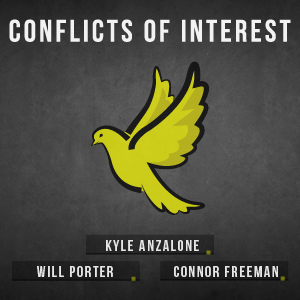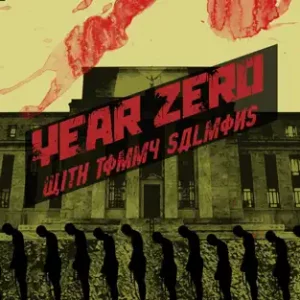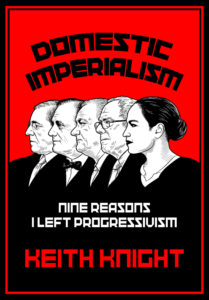Ancient Rome’s high tax rates enabled maintenance of larger professional armies than were possible in the Middle Ages. Rome partially conquered the world through massive tax-funded government projects, such as investing in roads for their armies to move farther and faster and to subdue distant populations more easily. But Rome’s self-destructive abuse of its people, along with its centralized governmental and heavy tax policy, contributed to its downfall. And since central powers could no longer maintain massive standing armies through heavy taxation, governance became localized. The lack of large cities, commercial economies, large scale slavery, and powerful governments meant feeding or funding large standing armies was nearly impossible for the agrarian and localized societies of the Middle Ages.
The change in the political system from the previous centralized Roman period to the decentralized feudal era transformed warfare, making it tamer and smaller. Because wars were limited to the nobility and their followers, the benefits of victory or conquest were theirs alone. Since he and his vassals were the only beneficiaries of a successful war, if a lord desired to expand, he paid the expenses out of his treasury, and he must recruit and upkeep his forces. Further, the king had to lead his men from the front. If a king were unwilling to risk dying for the cause, few would consider fighting for him. War is so horrible you must be willing to die yourself before you send others to do so. A primary function of the king was to lead men to war; this is why women were seldom in power in a militarized feudal society.
I am unsure of any better anti-war policy than to start having our politicians fund their own wars out-of-pocket and lead their armies to the front lines for the conflict. Then, have those who vote for them make up their armies rather than drafting conscripts. It will not take long for diplomacy to start working more efficiently. People are much more likely to engage in war when they spend other people’s money, and send others to die for their personal gain.
Lacking the power to tax heavily, feudal kings found it nearly impossible to conduct extensive, long-term conquests or occupations. Feudal vassals and musters of men owed only a short term of service. The war debt was placed directly on the king and his family. They might have to sell their lands (such as Richard the Lionheart did to fund his crusade) to accomplish their goals. Not being able to place the cost of their ambitions on taxpayers as politicians do today, a member of the king’s family might oust him if he burdened the family in such a way.
Due to the lack of true governmental powers, we no longer see massive professional armies funded by heavy taxation in the Middle Ages; wars departed from the “national” and “political” realms. Instead, they became private disputes between houses or individual lords and petty grabs at expansion. Generally, “wars” were fought due to disputed inheritance after a death broke the hereditary chain, and the line of succession was in question. Further, due to hereditary inheritance, lords could instead choose to expand their realms through marriage and diplomacy, avoiding war altogether.
In Roman times professional soldiers, mercenaries, slaves, urban warriors, prisoners, criminals, and the landless masses made up the bulk of the armies. By contrast, having extra time to train and advancements in equipment, the rural aristocratic Christian lord became a knight and dominated the battlefield, replacing the brutality of an earlier age with much more tame and modest warfare. Lords needed fewer soldiers because aristocrats could afford the time to train, to upkeep expertly crafted armor, and their horses could dominate multiple hired soldiers. The treatment of soldiers drastically improved because the warriors were valuable. They were loved and loyal, oath-bound, personally known vassals of a lord, not conscripted massas sent to be slaughtered. The lords would not easily sacrifice those they love but instead deal carefully with them; further, because they were valued, they were worth more alive when captured.
When conducted by faithful oath-bound followers of the lord rather than draftees and conscripts, war became detached from the rest of society. The warfare between houses and oath-bound vassals often left the rest of the population unaffected. Medieval wars were not nations at war where production and the population at large were engaged in conflict. Instead, the lord’s followers and the money he gained from his lands sustained the wars; thus, they were much smaller and less lethal. The aims were smaller, and so were the costs.
According to economist Hans-Hermann Hoppe, quoting Italian historian Guglielmo Ferrero, “The object of warfare was the execution of skillful maneuvers and not the annihilation of the adversary; a campaign without battles and without loss of life, a victory obtained by a clever combination of movements, was considered the crowning achievement of this art, the ideal pattern of perfection…war became a kind of game between sovereigns.” One ninth century biographer of Charlemagne described him as an ideal warrior because he could conquer a city “without the shedding of blood, and merely by the exercise of skill.”
This was the ideal lord, not a general who is excellent at inflicting losses on the “enemy” but one who could win without loss of life. European chess was adapted in the Middle Ages from its origins in the East to become a game of maneuvering for victory rather than destruction. You could achieve victory without blood loss through checkmate. Augustine of Hippo said the goal of a just war is to bring peace, and armies should only use just enough force to bring victory. Thomas Aquinas argued for a war to be considered just, it must first be announced and declared to the enemy so they could prepare for war. Historian William Davis explained some of the rules of war thus:
“For example, if a vassal attacks his suzerain, none but his own family (among his noble followers) can aid him. Also, in any case, at least a week’s notice must be given ere the war is commenced. After the war does begin, forty days’ respite must also be granted your foe’s relatives ere attacking them. In the interval they are entitled to proclaim their neutrality and so to become safe. Again, one is supposed to respect priests and women and minors. Finally, if a truce is made the suzerain is bound to punish the violators. Such understandings rob warfare of part of its horrors, but do not prevent infinite blood and misery.”
Many feudal “wars” amounted to threats or a few skirmishes spread over multiple years, not our modern continual in-the-field armies grinding it out long-term. Sometimes, a simple duel between heirs could prevent a war. Further, when kings took over new territories, they generally did not engage in destroying or reorganizing the conquered areas; the “conquered” people were customarily left alone but now had a new lord. Their laws, customs, and so forth continued as they were previously; their obligations were now owed to a new lord. In other words, they were not defeated and subjugated people. On the other hand, in democratic wars, like in politics, the victor imposes its ways on the conquered territory and molds it into its desired image. As a result, we eradicate entire civilizations, societies, cultures, and diverse lifestyles, standardizing everything.
Despite cinematic portrayal and the genuinely fierce nature of hand-to-hand combat, medieval wars were comparatively bloodless and tame compared to modern times. Professor Susan Reynolds wrote, “The picture of the whole Middle Ages as dominated by unruly barons and knights, who made war on each other and tyrannized over hapless peasants from their castles is inadequate, because no medieval historians now see the period in that way.”
Most medieval wars were fought by petty feudal lords managing forces between a couple of hundred and a few thousand. Because the lord paid for the war and valued his loyal vassals, who were not easily replaced, battles often resulted in few deaths. Casualties for an entire war were usually only a few hundred. In 917, after hours of “heavy engagement” and “intense fighting,” one hundred died. Only three of the nine hundred knights who were engaged in 1119 at the Battle of Brémule died. The causality list for a year-long war in 1127 amounted to just five knights. Historian Maurice Keen wrote, “battles of the twelfth and thirteenth centuries often involved no more than a few dozen deaths.” Another historian, Christopher Tyerman, wrote “many battles and military forays…consisted of a few hundred, even a few score. Some battles could feature a dozen or so knights. The nature of medieval warfare precluded the huge forces of the classical age, the mass national levies of the late eighteenth century, or the industrialized conscription of modern times.”
Since lords did not have the centralized powers of a democratic state, they could not maintain long-term or far-reaching goals. The cost to maintain a large army for a two-month siege in 1340 was a third more than the total income of the crown for a year. Smaller governments could not conduct warfare as extensively as later democracies and absolute monarchies did.
Because wars were between royal houses and not nations, capturing a single town with a castle could end a conflict. Many “wars” did not result in blood loss but were concluded via diplomacy, usually with one side paying tribute to the other. Warring lords first tried to harass supply chains to force the opposition to retreat, leading to a beneficial diplomatic outcome. A war could be won without fighting; sometimes, a muster was enough to change minds and bring a diplomatic solution.
Further, chivalry transformed warfare from pagan warlords’ looting, destruction, enslaving, raping, and murdering to the Christian nobility of the Middle Ages. Warfare became the domain of chivalrous knights, releasing them from pagan government powers and forced obedience. Sadly, pagan warfare returned with the rise of the modern state and became barbaric again.
In the Middle Ages, the Church limited the brutality of warfare by declaring the killing of noncombatants sinful and outlawing war on Holy Days. Beginning in the tenth century, various bishops passed rules limiting war to specific days and protecting certain classes of people. The Council of Charroux in 989 made it clear noncombatants such as peasants, children, clergy, and women were exempt from warfare. In the Christian Middle Ages, Pernoud wrote, “War was restricted to those who were equipped to fight…a notion which was totally unknown in the pagan world.” In 1027 the Truce of God was instituted, outlawing warfare on certain holy days and protecting clerics, women and workers on the land from being assailed. In 1179, the Third Council of the Lateran wrote the Truce into canon law, making it binding on the whole of Catholic Christendom.































